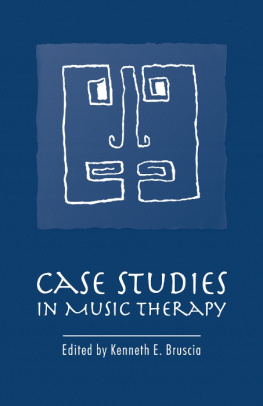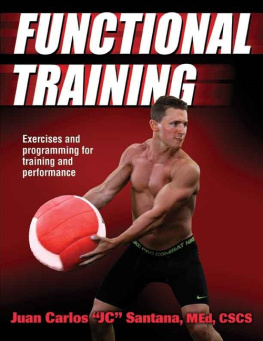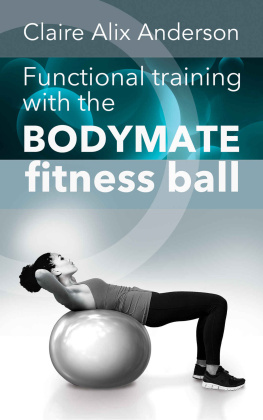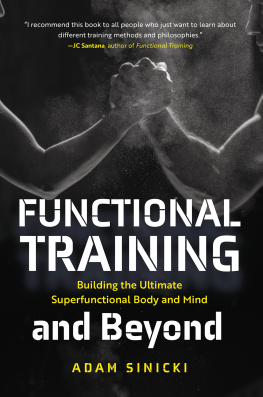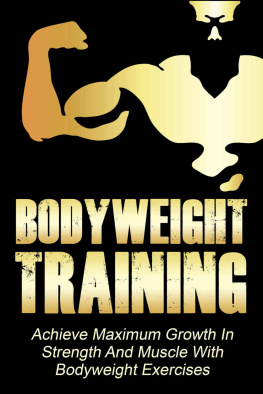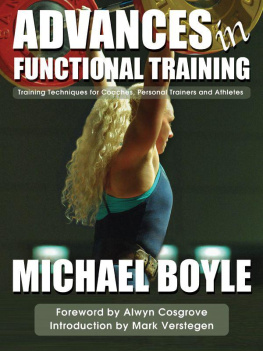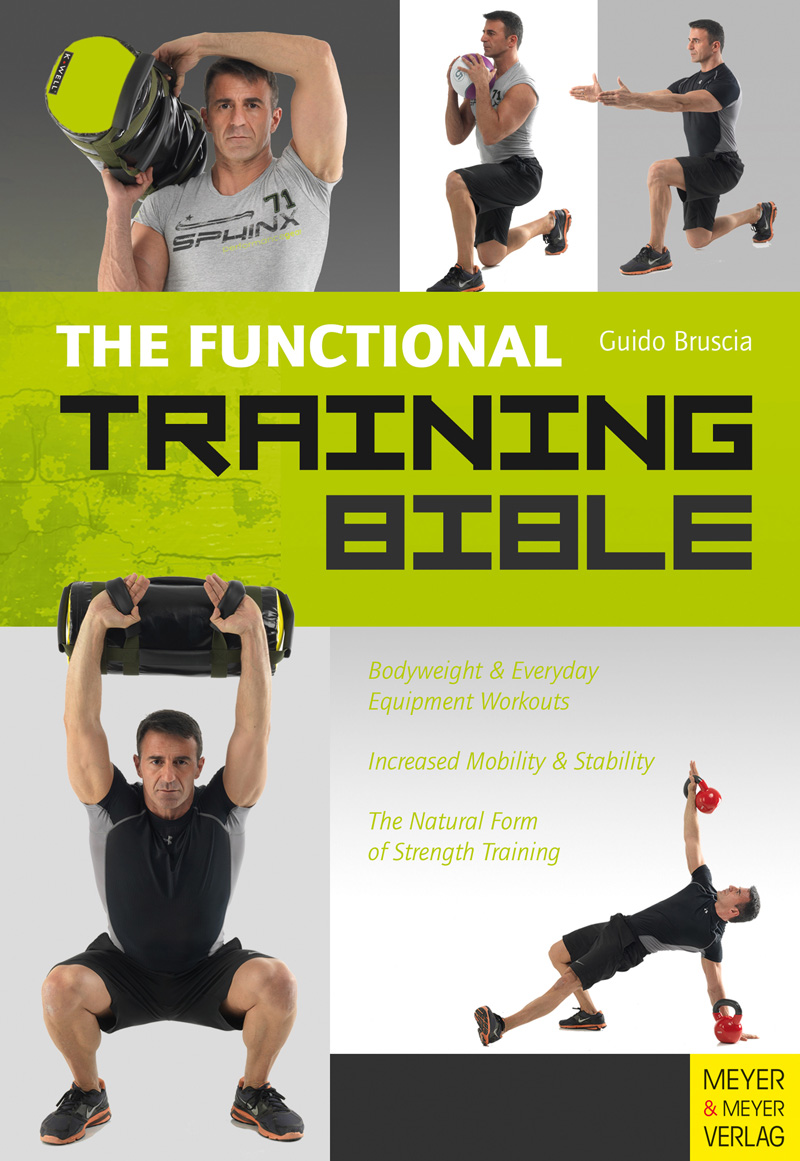
Guido Bruscia
The Functional Training Bible
Meyer & Meyer Sport (UK) Ltd.

Contents
Imprint
2015 by Meyer & Meyer Sport (UK) Ltd.
Aachen, Auckland, Beirut, Cairo, Cape Town, Dubai, Hgendorf, Hong Kong, Indianapolis, Manila, New Delhi, Singapore, Sydney, Teheran, Wien
Member of the World Sport Publishers Association (WSPA)
978-1-78255-372-4
www.m-m-sports.com
ISBN 978-1-78255-372-4
Foot Notes
Margaria R. (1938). Sulla fisiologia e specialmente sul consumo energetico della marcia e della corsa a varia velocit ed inclinazione del terreno, in Atti Accademia Nazionale dei Lincei 7, 299-368.
Hanfried K. (2004). On the Development of the Constraint Motion Theory of Franz Reuleaux An Overview, in International Symposium on History of Machines and Mechanisms, pp. 201-215.
Hanfried K. (2004). On the Development of the Constraint Motion Theory of Franz Reuleaux An Overview, in International Symposium on History of Machines and Mechanisms, pp. 201-215.
Hirtz P. (1985). Coordination Abilities in School Sports. Volk und Wissen.
Paillard J. (1982). Apraxia and the neurophysiology of motor control, in Philosophical Transactions of the Royal Society B: Biological Sciences, 298:111-134
Veestagen G., (2010-2012-2014). Personal communication, Perform Better Convention, LA.
Bosco C. and Viru A. (1996) Biologia dellallenamento, SSS, Roma
Bellugue P. (1963). Introduction a lEtude de la Forme Humaine: Anatomie Plastique et Mchanique, Librairie Maloine SA.
Kapandji I.A (1983). The Physiology of the Joints, Elsevier Churchill Livingstone Publisher.
Kapandji I.A (1983). The Physiology of the Joints, Elsevier Churchill Livingstone Publisher.
Zatsiorskij V.M. and Sazonov V.P. (1988). Basi biomeccaniche nella prevenzione dei danni alla colonna lombare durante esercizio fisico Revisione della bibliografia esistente, in Atleticastudi, 5.
Kapandji I.A (1983). The Physiology of the Joints, Elsevier Churchill Livingstone Publisher.
Kapandji I.A (1983). The Physiology of the Joints, Elsevier Churchill Livingstone Publisher.
Boyle M. (2010). Personal communication, Perform Better Convention, LA.
Boyle M. (2010). Personal communication, Perform Better Convention, LA.
Paillard J. (1982). Apraxia and the neurophysiology of motor control, in Philosophical Transactions of the Royal Society B: Biological Sciences, 298: pp. 111-134
Henneman E., Somjen G., and Carpenter DO. (1965). Functional significance of cell size in spinal motoneurons, in Journal of Neurophysiology, 28: 560-580.
Henneman E. and Olson CB. (1965). Relations between structure and function in the design of skeletal muscles, in Journal of Neurophysiology, 28: 581-598. Henneman E, Somjen G, and Carpenter DO. (1965). Excitability and inhibitability of motoneurons of different sizes, in Journal of Neurophysiology, 28: 599-620.
Boyle M. (2010). Personal communication, Perform Better Convention, LA.
Henneman E., Somjen G., and Carpenter DO. (1965). Functional significance of cell size in spinal motoneurons, in Journal of Neurophysiology, 28: 560-580. Henneman E. and Olson CB. (1965). Relations between structure and function in the design of skeletal muscles, in Journal of Neurophysiology, 28: 581-598. Henneman E, Somjen G, and Carpenter DO. (1965). Excitability and inhibitability of motoneurons of different sizes, in Journal of Neurophysiology, 28: 599-620.
Endnotes
Shutterstock (www.shutterstock.com)
Shutterstock (www.shutterstock.com)
Shutterstock (www.shutterstock.com)
Shutterstock (www.shutterstock.com)
Shutterstock (www.shutterstock.com)
Shutterstock (www.shutterstock.com)
Shutterstock (www.shutterstock.com)
Shutterstock (www.shutterstock.com)
Shutterstock (www.shutterstock.com)
Shutterstock (www.shutterstock.com)
Shutterstock (www.shutterstock.com)
Shutterstock (www.shutterstock.com)
Warning
Before you start any training, please consult your physician. The recommendations in this book are not to beconsidered as medical advice.
Those who use the techniques included in this text do so at their own personal risk.
The translation, digital storing, reproduction, and adaptation rights, whether total or partial, by any means(including micro-film and photostat copies) are reserved in all countries.
This book has been very carefully prepared, but no responsibility is taken for the correctness of the information it contains. Neither the author nor the publisher can assume liability for any damages or injuries resulting frominformation contained in this book.
ACKNOWLEDGEMENTS...
To my family, for never failing to embrace me.
To Ester, my partner and muse, for our life together.
To my grandmother Sara, 106 years old, still functional today.
To Ernesto Rossi and Sabrina Parrello (and their children Ettore and Giovanni),
for their great, true and unconditional friendship.
... THANKS
This book was born many years ago and is the work of the author and of all those who have been for him, even if unaware of it, a source of inspiration and ideas:
Emilio They (a friend and master never mourned enough), Marco Neri, Steve Cotter, Michael Boyle, Robert Dos Remedios, Alwin Cosgrove, Martin Rooney, Stuart McGill, Todd Durkin, Josh Henkin, Michol Dalcourt, Gray Cook, Marc Lebert, and many others who, for reasons of space (and memory!), I cannot mention.
Thank you also to all the friends, students, and colleagues who follow me with affection and respect.
Here, too, I can do justice to only a few of them:
Eda Maistrelli, Roberto Braghiroli, Claudio Arena, Emanuele Gollinucci, Roberto Cappelletti, my students at the Hamazon courses in Piombino and Castiglione della Pescaia, Bruno and Serena and the Mensana gym staff in Grosseto, Marco Giannoni and the Palestra Azzurra gym staff in Follonica, Mirko, and Cesare and the Living Club gym staff in Piombino.
Thanks also to the companies that help me with my work:
Elika Editrice
Fitness Best Innovation
Libertas
Ledraplastic
Tecnocomponent
Technogym
Newvitality
Superdry
Xconcept
Vibram Fivefingers
Vistawell
FOREWORD
Ever since humankind appeared on earth, people have always interacted with the environment in their own way.
Civilization has brought infinite advantages to the life of human beings but has also made them weaker and more imperceptive. The senses of smell, hearing and touch, proprioception, and the various organic capacities have all undergone modifications in the course of evolution from our ancestors to the present day. The result is that, while on the one hand we live in heated homes, on the other, a gust of wind is enough to send us to bed with a fever (Marlo Morgan, E venne chiamata due cuori).
Galen, one of the fathers of medicine (131-201 AD), wrote in his work De sanitate tuenda:
...This is what I consider as physical exercise or gymnastics, a term connected with the gymnasium, where people go to anoint themselves, enjoy a massage, engage in wrestling, discus throwing or other sporting activities.
Next page

